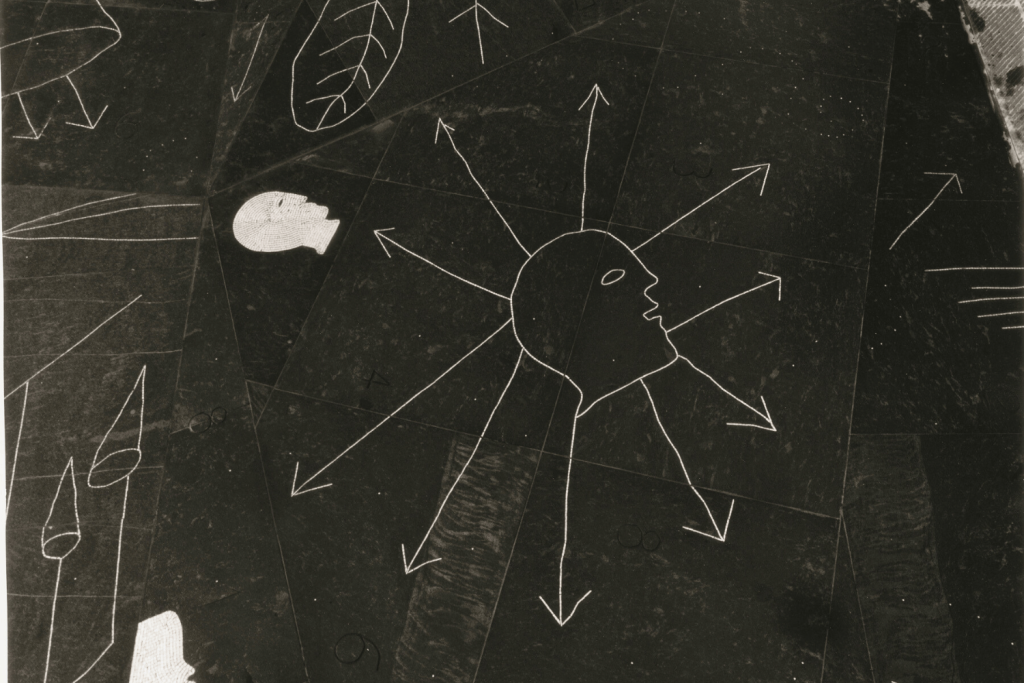Contemporary art for Leonardo
In Vinci, major expressions of contemporary art interpret the ever-relevant legacy of Leonardo. An artistic journey that winds through the key locations of the village, an international tribute to the Tuscan genius and his hometown.

Mario Ceroli – “The Man of Vinci”
Donated by the artist himself to the town in 1987, the large wooden sculpture standing in the square behind Conti Guidi’s Castle is inspired by the world-famous drawing housed in the Gallerie dell’Accademia in Venice, in which Leonardo depicts Vitruvius’ concept of human proportion.
The three-dimensional version of the artwork pays tribute to the modernity and dynamism of Leonardo’s drawing—an image that Mario Ceroli had already explored as early as the 1960s. The statue, which embodies the Renaissance principle of man as the measure of all things, has become a symbol of Vinci and of its unbreakable bond with Leonardo.

Nina Akamu – "Leonardo’s Horse"
The equestrian monument is inspired by Leonardo’s unfinished project for a colossal statue of Francesco Sforza, which he worked on during his first stay in Milan. In 1977, Charles Dent, a passionate admirer of the Italian Renaissance, became captivated by the idea of completing Leonardo’s failed endeavor. He founded the Leonardo da Vinci’s Horse organization in Pennsylvania and commissioned artist Nina Akamu to create the sculpture. In 2001, the completed statue was donated to the town and installed in Piazza della Libertà.

Mimmo Paladino - "A Square for Leonardo"
The sculptures in Piazza de’ Guidi, etched with glass tiles and silver blades, create a striking theatrical effect, especially at night, and introduce visitors to the Leonardo journey and the city tour. It was precisely the idea of a high artistic value work, capable of symbolically dialoguing with the museum itself and Leonardo’s legacy, that led the Municipality of Vinci to organize a design competition in 2003. Artists such as Anish Kapoor, Ilya Kabakov, Joseph Kosuth, and Jannis Kounellis participated, and the winner was Mimmo Paladino.
Paladino’s work, with its geometries and abstract forms inspired by the polyhedron—a symbol of the Renaissance—evokes Leonardo’s trust in geometry and shapes an unprecedented and evocative contemporary urban space in the historic heart of Vinci.

Cecco Bonanotte - "Leonardo’s Baptism"
In the Church of Santa Croce, the chapel that still houses the 15th-century baptismal font where Leonardo da Vinci was baptized also contains a sculptural cycle dedicated to the History of Salvation, created by Cecco Bonanotte. The sculptures in this cycle are distinguished by a refined sense of lightness and a particular chromatic sensitivity that Master Bonanotte imparts to his works. This installation, commissioned by the Parish of Santa Croce, was completed in 2010 with the support of the Municipality of Vinci and the Florence Savings Bank Foundation.

Wu Weishan - "Dialogue Beyond Time and Space: Leonardo da Vinci and Qi Baishi"
A tribute to the power of art to transcend time and foster dialogue between peoples: this is all embodied in the sculpture by Chinese artist Wu Weishan, Dialogue Beyond Time and Space: the Italian art master Leonardo da Vinci and the Chinese painter Qi Baishi, donated to the city of Vinci in January 2020.
The work consists of two bronze figures depicting Leonardo da Vinci and Qi Baishi, the father of modern Chinese painting, engaged in a sort of hypothetical conversation beyond time and geographical distance. The sculpture is located outdoors at one of the entrances to the Leonardo Museum, at the Palazzina Uzielli site. This placement not only gives visibility to the statues but also harmoniously integrates them into the surrounding landscape, which still resembles the environment that framed Leonardo’s birth and childhood.
